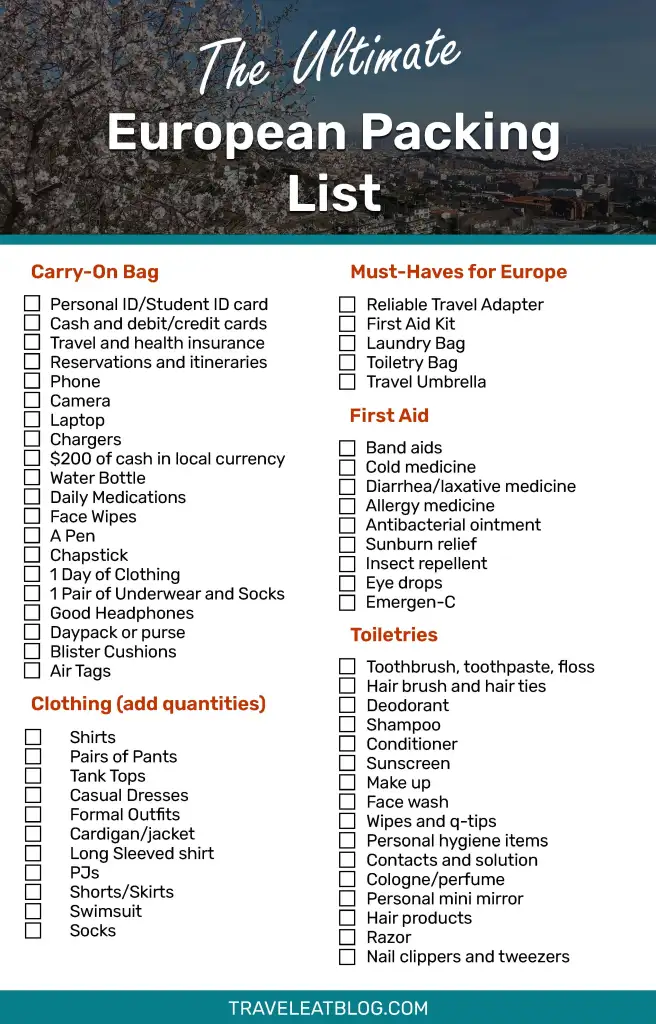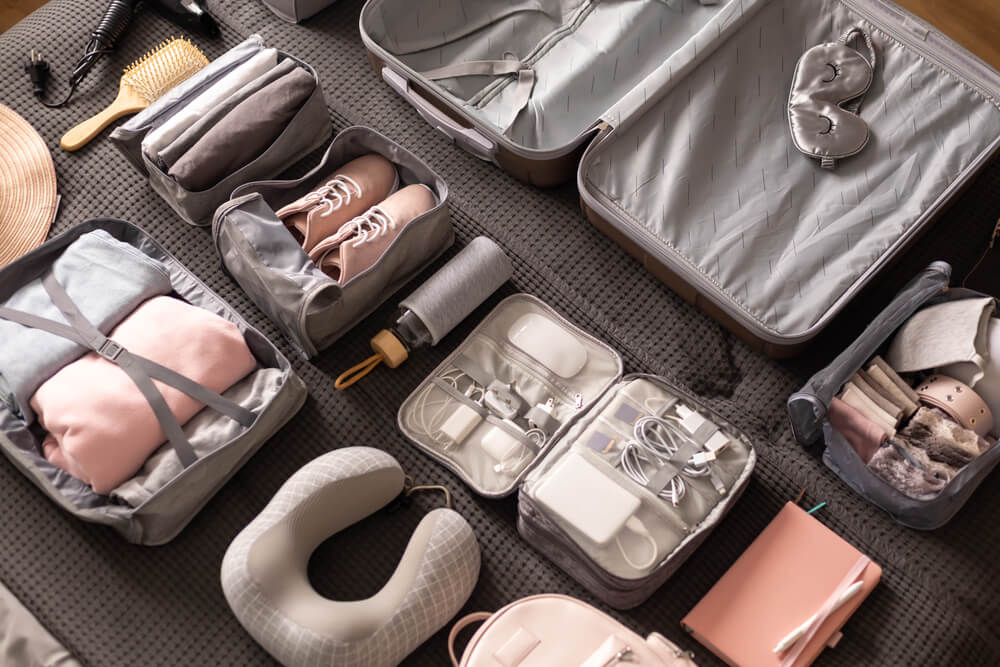Planning what you pack for Europe trip can feel immense, mostly if it’s your first time traveling to several countries. Europe is known for its impressive architecture, rich history, various cultures, and unstable weather. Packing well dressed helps you stay cosy , stylish, and well-prepared for every adventure, whether you’re strolling across Paris, exploring Rome, or hiking the Swiss Alps.
Below is a large and practical packing guide that covers every thing from clothing to travel essentials, make sure you’re ready for any season or situation.
Essential Travel Documents and Accessories
The most important thing is to pack for your Europe trip is your travel documentation. Keep arrange these items a in travel wallet or secured pouch:
- Passport and visa (if required)
- Flight tickets and hotel confirmations
- Travel insurance documents
- Copies of important documents stored digitally
- Credit cards and some local currency
- International driver’s license (if you plan to rent a car)
A lightweight, waterproof pouch can protect your important papers from spills or rain. It’s also wise to carry a small padlock for your luggage to keep every thing secured.
Clothing for a Europe Trip: Layering is Key
Europe’s weather can change quickly, and temperatures vary from region to region. The best packing strategy is layering.
- Tops: Pack breathable T-shirts, long sleeves, and a few dressier tops for evenings out.
- Bottoms: Bring a mix of cosy jeans, lightweight pants, and maybe a skirt or shorts depending on the season.
- Outerwear: A waterproof jacket or a light ditch coat works well in spring and fall. For winter, bring a warm coat, hat, scarf, and gloves.
- Shoes: Cosy walking shoes are essential since you’ll likely explore cities on foot. Also, pack a pair of dress shoes or sandals for dinners and particular outings.
- Accessories: Sunglasses, a foldable umbrella, and a travel hat can make your trip easier and more comfortable.
Packing neutral colors helps you mix and match outfits easily, so you can pack reduced but still have several looks.

Toiletries and Personal Care Items
Toiletries can take a lot of space, so travel-size items are good. Many European hotels provide basic amenities, but it’s wise to bring your favorites.
- Toothbrush and toothpaste
- Shampoo and conditioner (travel size)
- Deodorant
- Razor and shaving cream
- Hairbrush or comb
- Makeup and skincare essentials
- Sunscreen and lip balm
- Feminine hygiene products
Place liquids in a clear, resealable bag to meet airport security rules. A small first-aid kit with basic medicines like pain relievers or motion sickness tablets can be very handy.
Travel Gadgets and Electronics
Europe is well connected with Wi-Fi and charging stations, but their plugs and voltage may diverge. make sure to bring:
- Universal travel adapter and converter
- Phone and charger
- Power bank
- Camera or GoPro for capturing memories
- Headphones or earbuds
- E-reader or tablet for entertainment on long rides
If you plan to work remotely during your trip, pack your laptop in a protective sleeve and consider a lightweight backpack to carry it safely.
Suitcase and Packing
The best suitcase for a Europe trip is light weighted and easy to carry around. Many cities have packed streets and small stairways, so a big suitcase can be causes to carry.
- A medium-sized move suitcase or a travel backpack
- A carry-on bag with your requirements in case of lost luggage
- Packing cubes to keep every thing organized
- A foldable daypack for day trips and excursions
Try to leave some space in your luggage for souvenirs and items you might buy during your trip.

Special Items for Comfort and Convenience
There is a some easy to carry items that can make your journey easier:
- Reusable water bottle
- Travel pillow and eye mask for long flights
- Lightweight travel towel
- Snacks for train or bus rides
- Small laundry bag for dirty clothes
These simple additions can save you time, money, and stress on your journey.
Seasonal Packing Tips for Europe
Europe has four well defined seasons, so what to pack for Europe trip depends on where you’re going to:
- Spring (March to May): Light layers, a waterproof jacket, and comfortable shoes.
- Summer (June to August): Light cosy clothing, sunscreen, and a hat.
- Fall (September to November): Warm layers, a trench coat, and waterproof shoes.
- Winter (December to February): Warming coat, gloves, hat, scarf, and boots for cold and possibly snowy weather.
Checking the weather forecast a week before your trip will helps adjusts your packing list.
Final Packing Checklist for a Europe Trip
Before you pack up your bag, analysis this quick checklist:
- Passport, visa, insurance, and travel documents
- Clothing layers and shoes for all occasions
- Travel-size toiletries
- Electronics with universal adapter
- Organized luggage with packing cubes
- Seasonal items for comfort and warmth
- A little extra space for souvenirs
Conclusion
Knowing what to pack for a European trip can make the difference between a stressful journey and a smooth, unforgettable adventure. By packing light, staying arranged, and being get ready for changing weather, you can focus on what truly matters: exploring new places, experiencing local cultures, and making memories that last a lifetime.
Whether your itinerary includes the romantic streets of Paris, the canals of Venice, or the historic charm of Prague, having the right packing list ensures you can travel with confidence and ease.

